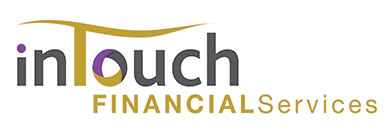Owning your home
Now you’ve closed on your mortgage
and the home is yours.
Tips on Owning Your Home
1. Act fast if you get behind on your payments
If you fall behind on your mortgage, the company that accepts payments on your mortgage contacts you. This company is your mortgage servicer. Your servicer is required to let you know what options are available to avoid foreclosure. Talk to your mortgage servicer if you get into trouble, and call a housing counselor (see page 12 for contact information). HUD-approved counselors are professionals who can help you, often at little or no charge to you.
Homeowners struggling to pay a mortgage should beware of scammers promising to lower mortgage payments. Only your mortgage servicer can evaluate you for a loan modification. If you suspect a scam you can call (855) 411-2372 or visit consumerfinance.gov/complaint.
2. Keep up with ongoing costs
Your mortgage payment is just one part of what it costs to live in your new home. Your escrow account holds your monthly taxes and homeowner’s insurance payments—but if you have no escrow account, you need to keep up with these
on your own. Your home needs maintenance and repairs, so budget and save for these too.
3. Determine if you need flood insurance
Flooding causes more than $8 billion in damages in the United States in an average year. You can protect your home and its contents from flood damage. Depending on your property location, your home is considered either at high-risk or at moderate-to-low risk for a flood. Your insurance premium varies accordingly. You can find out more about flood insurance at FloodSmart.gov. Private flood insurance could also be available.
Although you may not be required to maintain flood insurance on all structures, you may still wish to do so, and your mortgage lender may still require you to do so to protect the collateral securing the mortgage. If you choose to not maintain flood insurance on a structure, and it floods, you are responsible for all flood losses relating to that structure.
4. Understand Home Equity Lines of Credit (HELOCs) and refinancing
Homeowners sometimes decide they want to borrow against the value of their home to help remodel or pay for other large expenses. One way to do this is with a Home Equity Line of Credit (HELOC). You can learn more about HELOCs at files.consumerfinance.gov/f/201401_cfpb_booklet_heloc.pdf.
Financial counselors caution homeowners against using a HELOC to wipe out credit card debt. If you use a HELOC as a quick fix to a serious spending problem, you could end up back in debt and lose your home.
If you decide to take out a HELOC or refinance your mortgage, the Truth in Lending Act (TILA) gives you the right to rescind, meaning you can change your mind and cancel the loan. But you can only rescind a refinance or HELOC within three days of receiving a proper notice of the right to rescind from your lender. You cannot rescind if you are using your HELOC to buy a home.
In the case of a refinance, consider how long it will take for the monthly savings to pay for the cost of the refinance. Review the closing costs you paid for your original loan to purchase the home. Refinancing costs can be about the same amount. A common rule of thumb is to proceed only if the new interest rate saves you that amount over about two years (in other words, if you break even in about two years).
